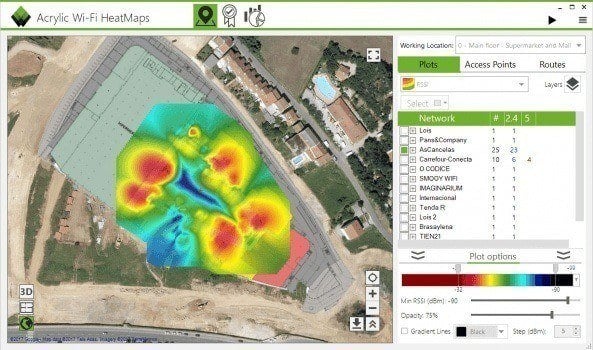

Certified Wireless Network Administrator Official Study Guide (Third ed.).
WLAN SITE SURVEY TOOLS FREE PORTABLE
There are various types of spectrum analyzers ranging from large and expensive bench-top units to portable ("field units") and PC-based analyzers. Unlike passive and active surveys, RF spectrum surveys require specialized RF equipment. The feasibility of creating professional-level applications for non-Windows tablets is debated. For example, signal level measurements cannot be obtained on iOS without jailbreaking. Some site survey applications for other platforms, including iOS and Android, also exist, however they are limited in functionality due to the limitations of the underlying platform API.

Currently, professional-level site survey applications exist primarily for Microsoft Windows. Predictive surveys require no hardware at all, as no wireless data collection is needed.
WLAN SITE SURVEY TOOLS FREE SOFTWARE
Passive and active surveys are performed using software and typically require only a compatible off-the-shelf Wi-Fi adapter no additional specialized hardware is required. Site survey software and hardwareĭepending on the survey type, a number of software and software/hardware options are available to WLAN surveyors. The value of a predictive survey as a design tool versus a passive survey done with only a few access point is that modeled interference can be taken into account in the design.Īdditionally, some survey application allow the user to collect RF spectrum data using portable hardware spectrum analyzers, which is beneficial in case of high RF interference from non-802.11 sources, such as microwave ovens or cordless phones. Virtual access points are then placed on the floor plan to estimate expected coverage and adjust their number and location. Therefore, temporary access points or signal sources can be used to gather information on propagation in the environment. It is essential that the correct information on the environment is entered into the RF modeling tool, including location and RF characteristics of barriers like walls or large objects. Active surveys are used to troubleshoot wifi networks or to verify performance post-deployment.ĭuring a predictive survey, a model of the RF environment is created using simulation tools. This used to be the most common method of pre-deployment wifi survey.ĭuring an active survey, the wireless adapter is associated with one or several access points to measure round-trip time, throughput rates, packet loss, and retransmissions. For system design purposes, one or more temporary access points are deployed to identify and qualify access point locations. However, the wireless adapter being used for a survey is not associated to any WLANs. ĭuring a passive survey, a site survey application passively listens to WLAN traffic to detect active access points, measure signal strength and noise level. There are three main types of wireless site surveys: passive, active, and predictive. Wireless site survey can also mean the walk-testing, auditing, analysis or diagnosis of an existing wireless network, particularly one which is not providing the level of service required. This involves determining the minimum signal to noise ratio (SNR) needed to support performance requirements. Interviews with IT management and the end users of the wireless network are also important to determine the design parameters for the wireless network.Īs part of the wireless site survey, the effective range boundary is set, which defines the area over which signal levels needed support the intended application. This requires analysis of building floor plans, inspection of the facility, and use of site survey tools. The survey usually involves a site visit to test for RF interference, and to identify optimum installation locations for access points. Planning and designing a wireless networkĪ wireless site survey, sometimes called an RF (Radio Frequency) site survey or wireless survey, is the process of planning and designing a wireless network, to provide a wireless solution that will deliver the required wireless coverage, data rates, network capacity, roaming capability and quality of service (QoS).


 0 kommentar(er)
0 kommentar(er)
